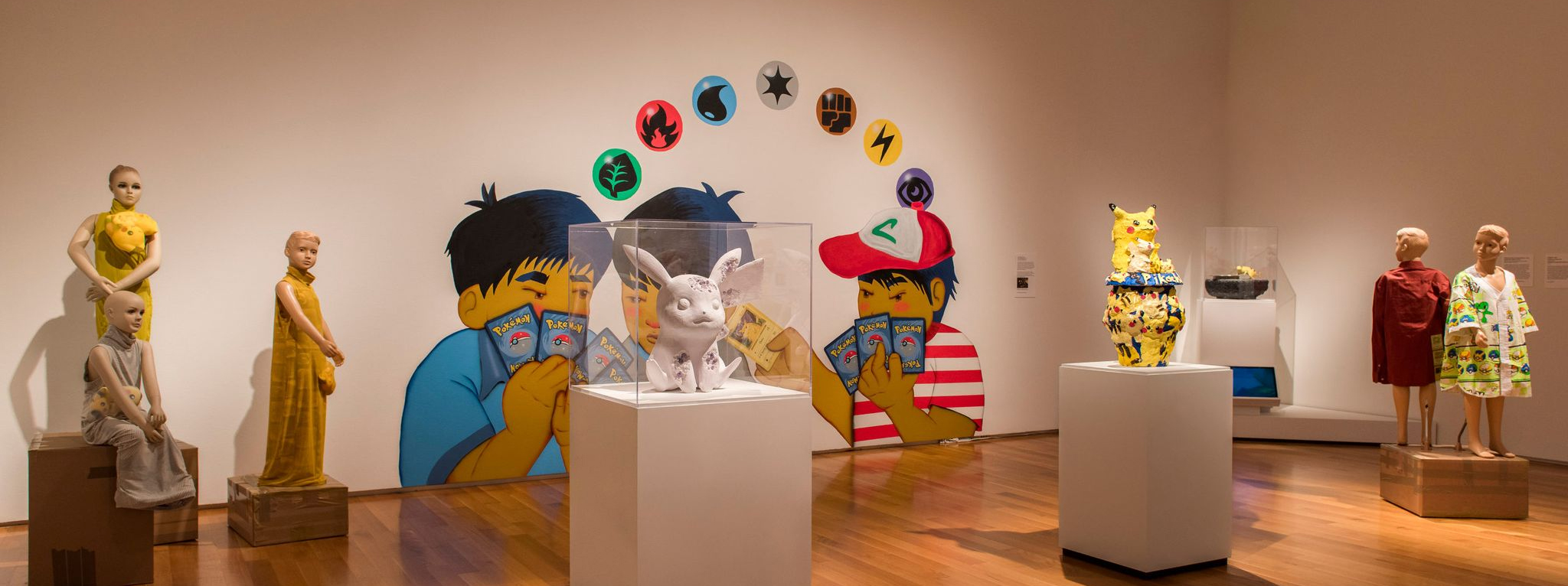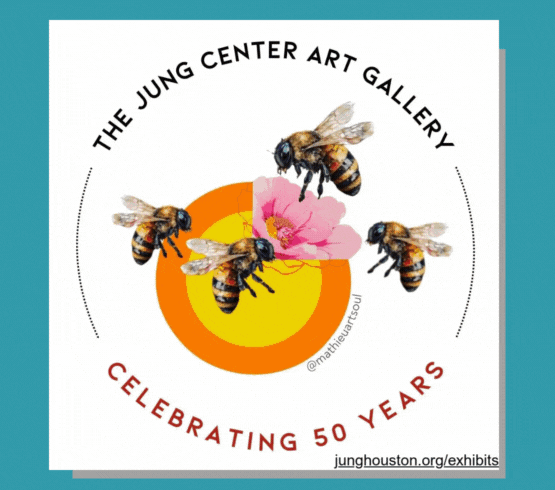In the House of Pikachu, Memory Speaks in Color.
Long before Pikachu or Sailor Moon, there was Astro Boy. In 1963, Osamu Tezuka’s wide-eyed android appeared on Japanese television, his movements simple, his heart impossibly large. What began as a national phenomenon soon traveled across oceans, its black-and-white images teaching a new visual rhythm, one defined by speed, sincerity, and stylization. In the decades since, anime has evolved from niche import to global language. Its bold outlines and saturated colors have influenced everything from video games to fashion, architecture, and, increasingly, contemporary art.
Duffy, the Nancy C. Allen Curator and Director of Exhibitions, described the exhibition’s origin as deeply personal. “I was a little bit of a nerd growing up,” he said. “The happiest parts of my childhood were filled with watching anime and playing Pokémon or other games with my friends.” Over time, he began to see how anime had migrated beyond screens, appearing in the work of painters, sculptors, and multimedia artists. “It wasn’t just nostalgia,” he said. “It was a reflection of how widespread this visual culture had become.”
The exhibition opens with artists who shaped anime’s early connection to art: Yoshitaka Amano, whose ethereal character designs for Final Fantasy feel painted from light, and Keiichi Tanaami, whose hallucinatory visions bridged pop art and psychedelia. Their presence anchors the show in history while leaving room for the artists who came after: those who grew up not just watching anime but absorbing its language, rhythm, and emotional register.

1 ⁄8
Installation view, The House of Pikachu, Asia Society Texas Center. Photo by Graham Bell.

2 ⁄8
Installation view, The House of Pikachu, Asia Society Texas Center. Photo by Graham Bell.
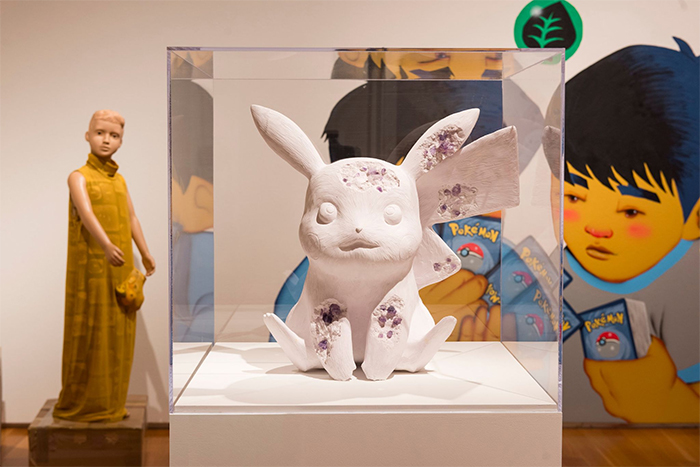
3 ⁄8
Installation view, The House of Pikachu, Asia Society Texas Center. Photo by Graham Bell.
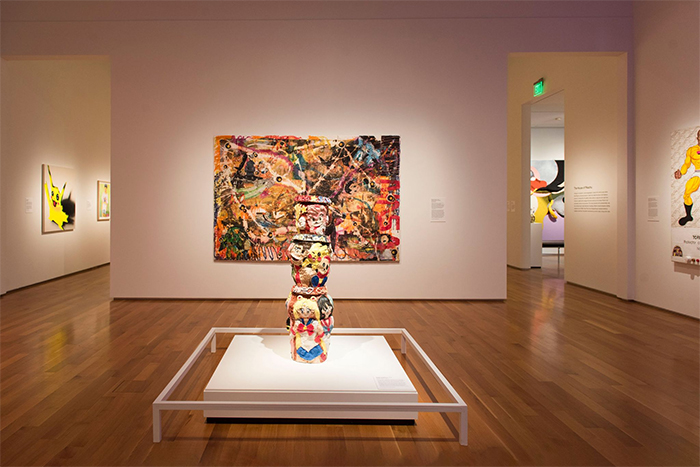
4 ⁄8
Installation view, The House of Pikachu, Asia Society Texas Center. Photo by Graham Bell.
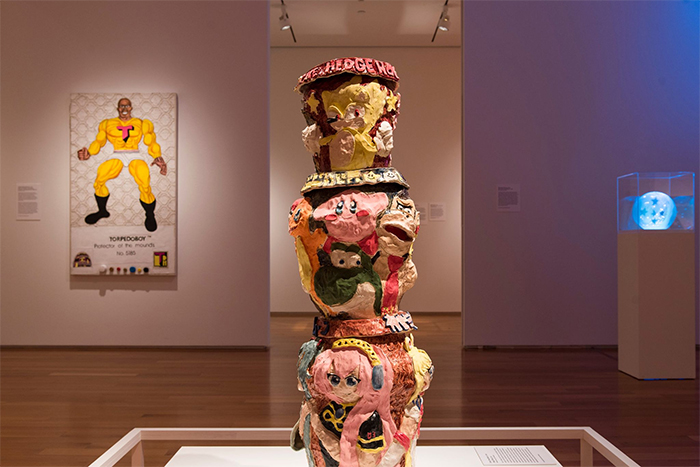
5 ⁄8
Installation view, The House of Pikachu, Asia Society Texas Center. Photo by Graham Bell.
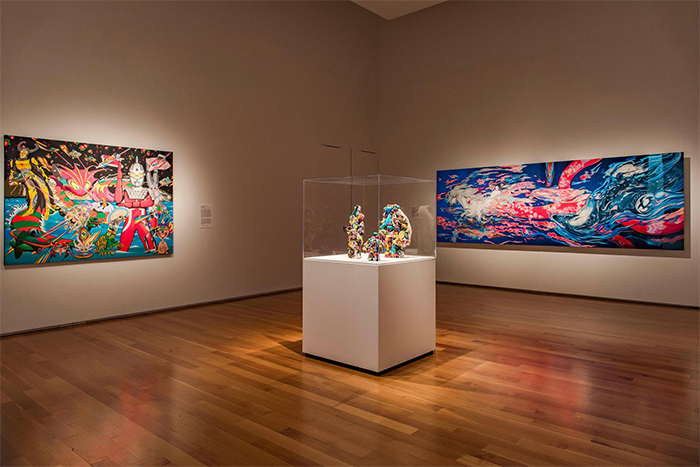
6 ⁄8
Installation view, The House of Pikachu, Asia Society Texas Center. Photo by Graham Bell.
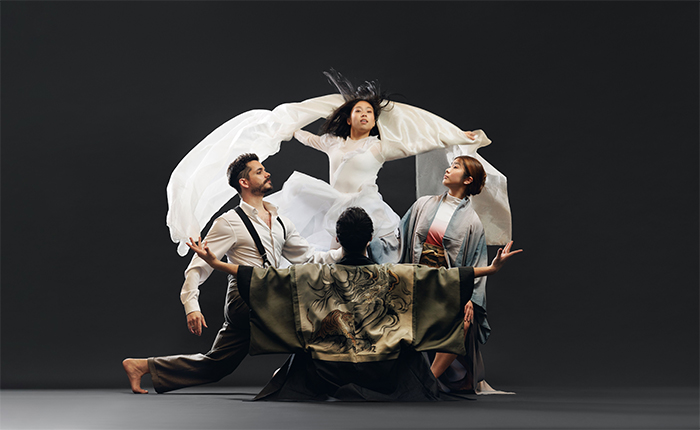
7 ⁄8
Houston Contemporary Dance Company Artists: Dylan Croy, Annabelle Daniels, Jen Kim and Dwain Travis in Kodama - Echoes Across Time. Photo by Claire McAdams.
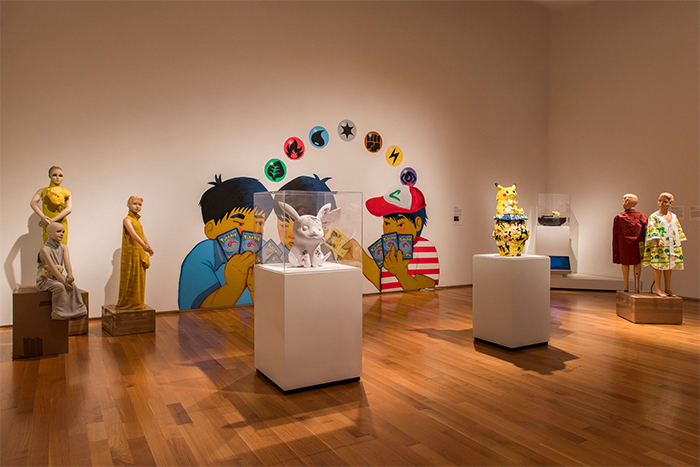
8 ⁄8
Installation view, The House of Pikachu, Asia Society Texas Center. Photo by Graham Bell.
Houston-based artist Gao Hang stands among them. His fluorescent, airbrushed Pikachu (2025) fractures the beloved mascot into a glowing geometric form, more digital apparition than cartoon. Gao, who grew up in China before moving to the United States in 2015, remembered the shared references that bridged his generation across continents. His Pikachu, caught between flatness and volume, digital and physical, seems to flicker in motion. Duffy observed that Gao’s work “played with the tension between three-dimensional reality and the flatness that defines anime,” a dynamic that gives the painting its charge.
Nearby, Korean American artist Emily Yong Beck’s earthenware sculptures carry a more deliberate dissonance. Traditional kimchi pots, rendered in the warm tones of onggi clay, are glazed with the glossy faces of Sonic the Hedgehog, Mario, and Jigglypuff. The collision feels immediate, even uncomfortable. By fusing Japanese pop icons with Korean craft traditions, Beck touches the fault lines of cultural history, the tension and violence between the two nations, while also revealing how Japan’s kawaii aesthetic has softened its global image. “Emily’s work was playful on the surface,” Duffy said, “but beneath that cuteness lay a commentary on soft power, how kawaii culture has been used to build an image of friendliness that glosses over darker histories.” Her pots shimmer under the lights, their cheerful glazes sitting atop a deeper, earthbound weight.
Trenton Doyle Hancock’s plastic dolls sit beneath a row of framed drawings, their glossy surfaces glowing under the gallery lights. Each figure, brightly colored and encased in patterned boxes, looks equal parts collectible toy and uncanny idol. Their bulbous forms and exaggerated features echo anime’s elasticity, characters that seem forever poised between innocence and excess. Positioned within a section of the exhibition that explores merchandising and the economics of fandom, Hancock’s work exposes the tension between creation and consumption, art and commodity. The dolls may invite affection, but they also confront viewers with the machinery of desire that powers pop culture itself.
Throughout the exhibition, Duffy traced anime’s rise as part of a broader history of cultural exchange. He compared the phenomenon to Japonisme in the nineteenth century, when Western artists absorbed Japanese woodblock prints into their own visual vocabularies. “Back then, it was one-sided,” he said. “Now the exchange is porous. These artists are connecting with anime not as ‘the other,’ but as something they grew up with.” The result, he noted, was not imitation but evolution, a new kind of pop art built on digital saturation and collective nostalgia.
At the back of the gallery, Houston artist Loc Huynh’s mural unfolds across the wall like a scene remembered from a dream. Two children, painted in radiant yellows and deep blues, clutch Pokémon cards close to their chests. The mural captures anime’s vivid palette but tempers it with intimacy, transforming a pop-cultural image into something personal and elegiac. Huynh, who often explores Vietnamese American identity, translates his own memories of growing up between cultures into this quiet exchange, an image of connection that is as much about belonging as it is about collecting.
What lingers from the exhibition is a sense of recognition, not of any single character or scene, but of the images that shaped so many private worlds. They follow you like echoes from a Saturday morning long gone, when color and story felt boundless. The House of Pikachu is less a celebration of nostalgia than a reflection on the persistence of those images: how they migrate across cultures, shift through generations, and continue to offer a way of seeing ourselves, animated, exaggerated, and achingly alive.
And there, in that glow, the child and the critic meet, each seeing themselves reflected in Pikachu’s unblinking gaze.
As The House of Pikachu continues through March 15, 2026, its reach expands beyond the galleries. On Jan. 24 and 25, Asia Society Texas will present Kodama – Echoes Across Time, an original dance work by Nao Kusuzaki. Performed by Houston Contemporary Dance Company with live illustrations by Acky Bright and a quintet of musicians, the piece traces Japan’s artistic influence across generations, from traditional forms to the global aesthetics that now shape entertainment and contemporary art.
—MICHAEL McFADDEN

